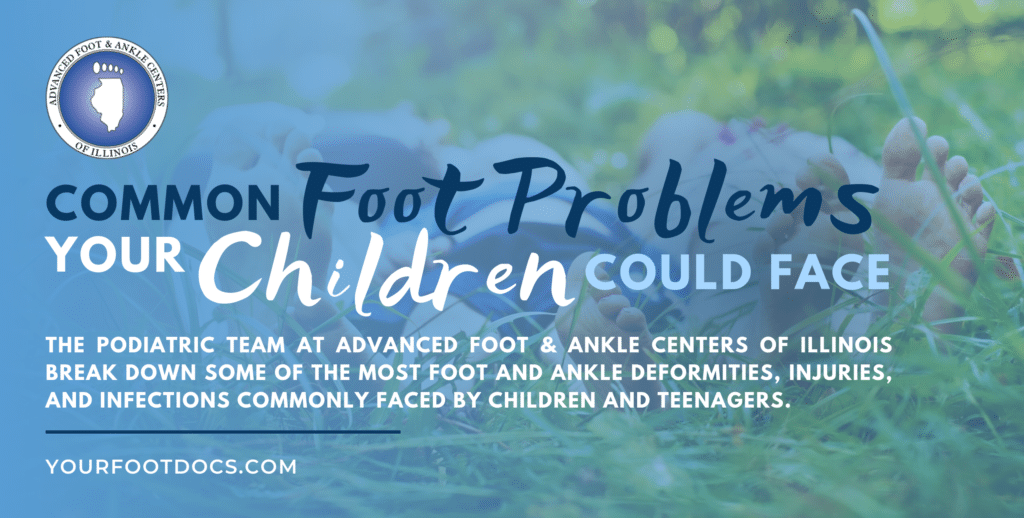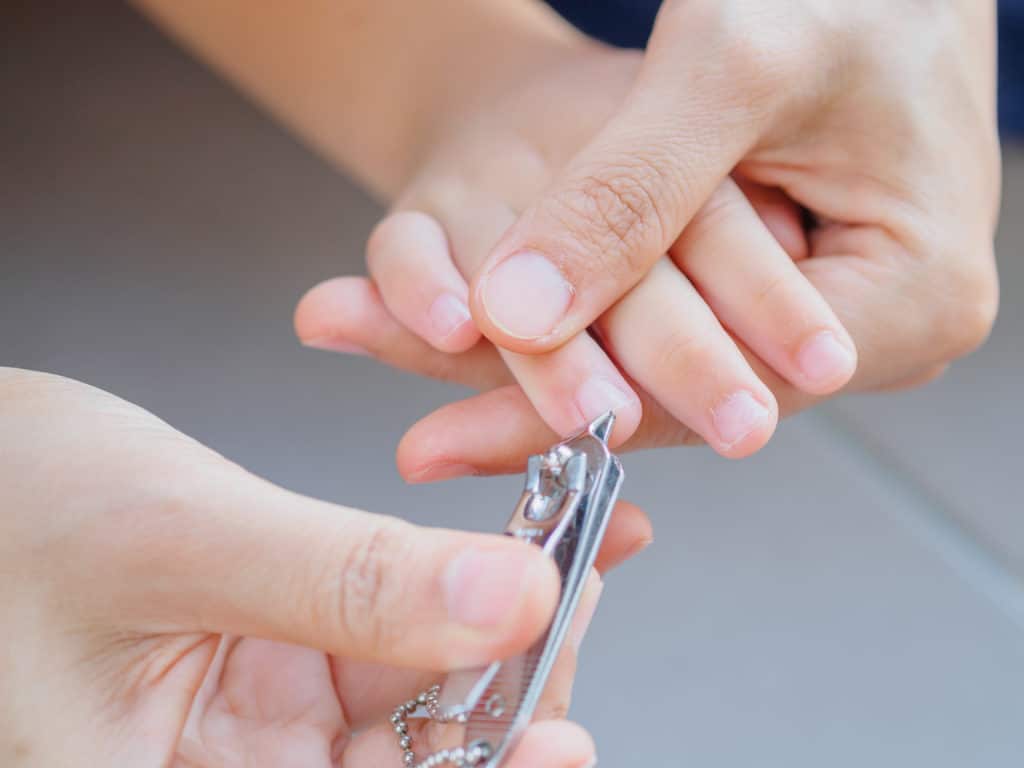Common Foot Problems Your Children Could Face
When it comes to foot care, treating kids can be quite different from treating their parents and grandparents!
And it isn’t just because kids might be a little more scared or confused, either. Their feet themselves are not simply littler versions of adult feet but have key biological and structural differences—softer bones, more flexible arches, etc.—that present unique challenges and diagnoses.
Furthermore, due to underdeveloped immune systems—not to mention general clumsiness—certain conditions that can technically affect people of all ages are especially common among children.
Why do we tell you these things?
The simple reason is that childhood foot care is really important. Although not all conditions require immediate intervention—and in fact, some even go away on their own—more serious pediatric foot conditions can cause lasting consequences if they are not treated and fixed in childhood.
As a parent, it’s up to you to keep an eye on your little one’s feet and make sure they receive proper treatment. But what should you look for?
Here’s a quick primer on some of the most common foot problems in childhood, broken down by category:

Structural Deformities and Gait Abnormalities
Now, no toddler is going to adopt a fully mature walking gait right out of the gate. There’s a reason we call them “toddlers,” after all. They toddle. It’ll take time for your little one to develop a confident, adult stride.
There’s also foot shape to consider. Most children do not develop permanent arches in their feet until around age 5 or so, since the connective tissues simply aren’t strong enough to hold it up when bearing weight.
However, you should still keep a close eye on any specific structural or gait abnormalities you may notice in your child. Some may be apparent right at birth; others may only reveal themselves once your child starts walking. Either way, taking your child in to see a podiatrist as soon as you notice something can help us identify (or rule out) any serious problems, as well as set a “benchmark” to track improvement.
Common conditions in this category include:
- Flat feet. Again, a young child with flat arches (or those that flatten only when bearing weight) is not necessarily a problem that needs treatment, as most kids do develop permanent arches by around preschool age. But you should still have your child checked to be safe. We may find a more significant problem (such as a bone coalition) that may require more aggressive treatment to prevent future pain and disability.
- In-toeing. Instead of pointing straight ahead, the feet and toes point inward when the child stands. It could be that the foot itself is turned inward (metatarsus adductus). In other cases, the rotation may be in the tibia (so the shins also point inward) or the femur (knees point inward). Most cases resolve naturally in time, although some do not.
- Out-toeing. Similar to in-toeing, except that the feet point outward instead of inward. Again, rotation could be in the foot, shin, or thigh. It’s less common, and sometimes more serious, than in-toeing.
- Here, the child’s feet are severely twisted or turned. Clubfoot can be treated non-surgically without impairing a child’s natural development, but it will require stretching and casting to begin as soon as possible after birth.
- Gait abnormalities. A little toddling when your child is learning to walk is normal. But if you notice persistent use of much odder walking patterns—high stepping, limping, bowlegs, knock-knees, constantly walking on tiptoes, etc.—we recommend you bring your child in to see us.
Skin and Nail Infections and Injuries

There are several reasons why kids are especially susceptible to infections and injuries to their skin and nails. One, their immune systems aren’t so good at handling bacteria and fungi yet. Two, they’re constantly outgrowing their shoes, which means toenails can get cramped pretty quickly. And three, they tend to be pretty accident prone!
Some issues you should look out for include:
- Ingrown toenails. This occurs when a border or edge of nail grows into the surrounding skin of the toe. It can be quite painful for your child and could even lead to an infection if not treated quickly enough. Fortunately, our office can provide effective same-day treatment that should have your little one feeling a lot better.
- Plantar warts. Kids can get warts pretty easily on both hands and feet, and this can be quite embarrassing for them. In addition, warts on a weight-bearing part of the foot can be painful, or at least irritating. We provide several treatment options to help make sure your young one eradicates these safely.
- Athlete’s foot. This itchy fungal foot rash is common in kids, especially those who play sports, walk barefoot in wet public areas, or just struggle with maintaining proper hygiene. Most cases can be treated at home using over-the-counter antifungal creams but give us a call if home treatments don’t work or the problem keeps returning.
Sports-Related Pain and Injury
As your child grows older, he or she may start to play more organized sports, or engage in more demanding physical play (running, jumping, dance, etc.). These are good things! But they also come with an increased risk of injury.
For the most part, sports injury conditions for children and teenagers have a lot of overlap with adult injuries—ankle sprains, broken bones, bruises, and the like.
However, we did want to draw attention to a specific form of heel pain that only kids, and adolescents can get, called Sever’s disease.
During childhood, the end of the heel bone is capped by a “growth plate” that’s softer and more susceptible to injury than the rest of the bone. Playing sports can aggravate it. So can tight calf muscles or tendons, especially if the bone is growing a little bit faster than the tissues that connect to it.
Now, kids are remarkably resilient when it comes to healing and rebounding from injury—Sever’s disease or otherwise—but that doesn’t mean they should continue to play through the pain! Ignoring a foot injury too long and not seeking proper treatment or giving adequate recovery time will only cause the condition to reappear or become worse.
In fact, one of the saddest problems we see is kids who have suffered multiple ankle sprains in their teenage years. This can quickly lead to chronic instability and post-traumatic arthritic pain, even at relatively young ages.
Protect Your Child’s Feet and Ankles
We don’t want to scare you. But we do want you to be vigilant! Keeping a close eye on your child’s feet and ankles can help you identify problems sooner and get them the treatment they need.
That means happier kids, less downtime due to pain and injury, and healthier feet and habits that continue to benefit your child well into their adult years!
If you’re worried about your child’s feet or ankles, please don’t leave it to chance. Give the Advanced Foot & Ankle Centers of Illinois a call to schedule an appointment for you and your little one. Check out our office page to choose the Chicagoland location most convenient for you.
